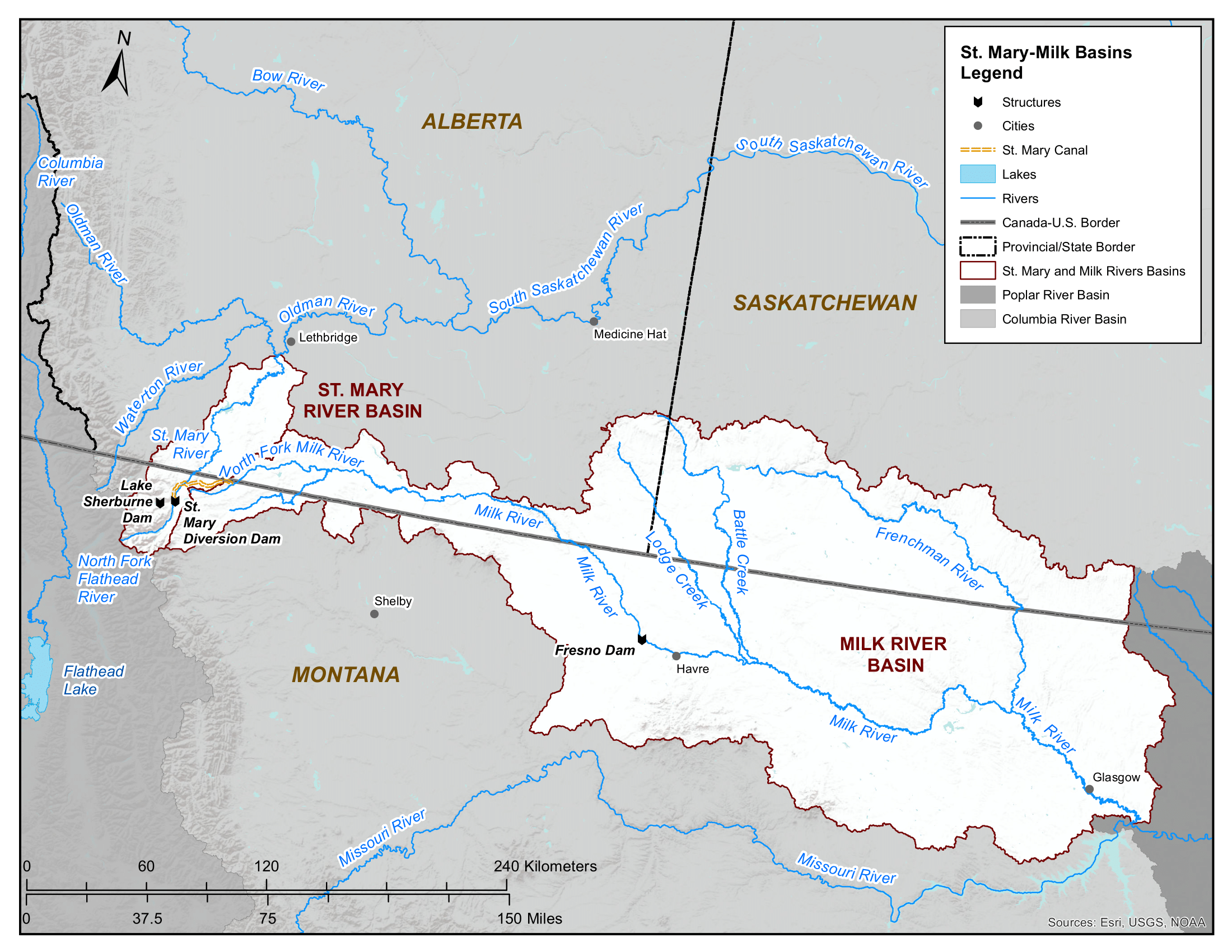Montana shares water with the Provinces of Alberta and Saskatchewan under terms of the 1909 Boundary Waters Treaty between the United States and Canada. Water in the Tongue and Powder rivers along Montana’s southern border is shared with Wyoming under terms of the 1951 Yellowstone River Compact.
St. Mary and Milk River Basins
The Province of Alberta and the State of Montana have shared the waters of the St. Mary and Milk rivers for more than 100 years under Article VI of the 1909 Boundary Waters Treaty. The St. Mary Canal on the Blackfeet Reservation in northern Montana physically connects these two systems, allowing water to be transferred from the St. Mary River basin to the Milk River basin.
Sharing the waters of the in St. Mary and Milk River basins presents a complex water management challenge given the vastly different hydrological regimes of the basins, the infrastructure required to move the water, and the jurisdictional interests of the state, provincial, and federal (U.S. and Canada) parties.

Shared Management of the St. Mary and Milk Rivers
The International Joint Commission in partnership with the State of Montana and Province of Alberta continue to work together to improve each countries access to the shared waters of the St. Mary and Milk Rivers.
International St. Mary and Milk Rivers Study
The International Joint Commission’s (IJC) International St. Mary and Milk Rivers Study, launched in November 2021, is exploring options to improve access to apportioned waters by each country, in recognition of climate change and challenges to apportionment since the original 1921 Order was issued. The effort includes a desire to achieve long-term resilience in accessing the shared waters of the St. Mary and Milk Rivers.
Montana - Alberta St. Mary and Milk Rivers Water Management Initiative
The Montana - Alberta St. Mary and Milk Rivers Water Management Initiative (Initiative) was an effort among water users and government officials in both jurisdictions to engage in a collaborative dialog on their mutual interest to improve access to the shared waters.
With the announcement of the IJC’s ‘International St. Mary and Milk Rivers Study’, Montana and Alberta agreed to officially close the Initiative and turn their attention toward participation in the IJC study. The Initiative produced three reports prior to ceasing their work.
St. Mary - Milk Rivers Administrative Measures Task Force
In April 2003, Montana requested the International Joint Commission (IJC) to review the 1921 IJC Order that sets out procedures for implementing Article VI of the 1909 Boundary Waters Treaty between the United States and Canada. In response the IJC created the eight-member Administrative Measures Task Force. The IJC directed the Task Force “to examine and report to the IJC on measures for improvement to existing administrative procedures if the St. Mary and Milk Rivers apportionment to ensure more beneficial use and optimal receipt by each county of its apportioned waters.”
